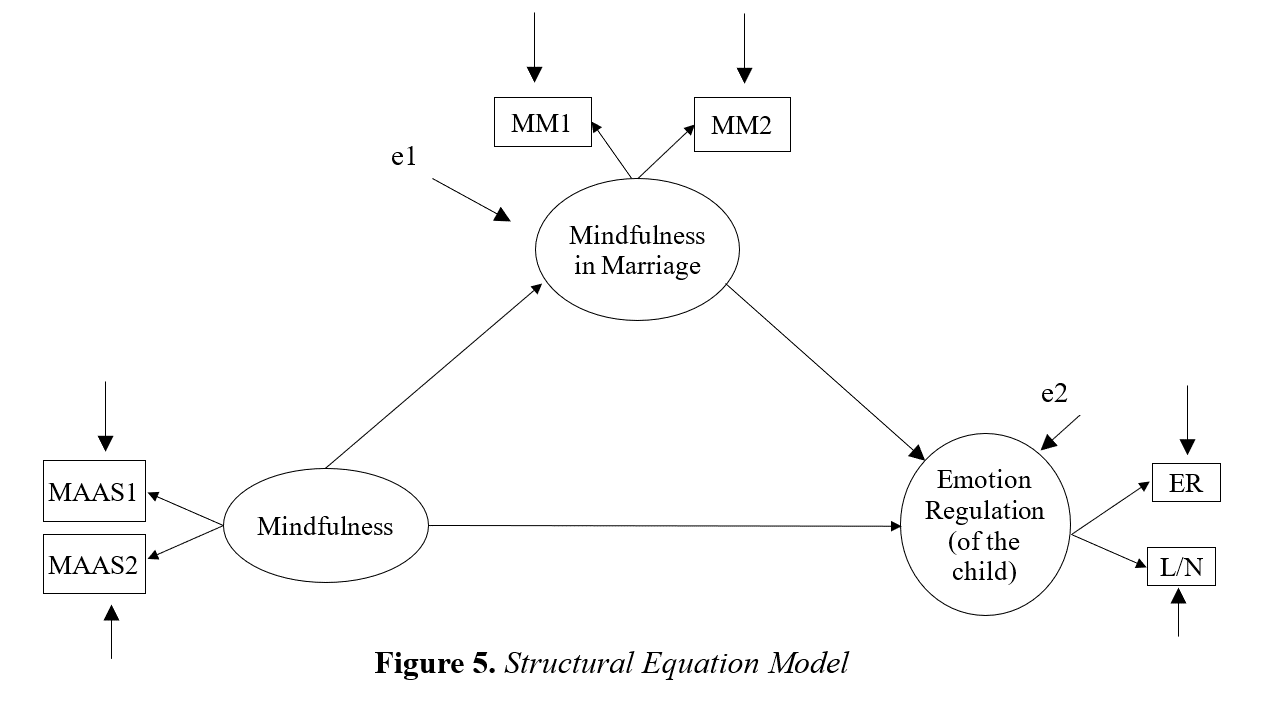Information

Modeling approaches that include measurement errors, multiple concept measurements, and multi-equation models are called structural equation models (Bollen & Noble, 2011). Figure 5 presents the structural equation model consisting of 3 latent variables.

One of the hypotheses for the structural equation model presented in Figure 5 is “Mindfulness in marriage has a mediator role in the relationship between parents’ mindfulness and emotion regulation of their children.” Based on this hypothesis, parents’ mindfulness predicts mindfulness in marriage and mindfulness in marriage predicts emotion regulation of their children. Thus, parents’ mindfulness predicts emotion regulation of their children through mindfulness in marriage. The figure clearly shows the observed and latent variables. For example, “Emotion Regulation” consists of two observed variables, ER and L/N. In other words, Emotion Regulation Checklist (Kapçı et al., 2009; Shields & Cicchetti, 1997) consists of two sub-dimensions.
The error terms are shown by the one-way arrows in the figure that point to the observed variables. The error terms, e1 and e2, are shown above the latent and dependent variables, mindfulness in marriage and emotion regulation. The error terms represent the effect of the error in the estimation of the latent variable. Each path in the model shows the hypothesis being tested.
Until this section, general information about Structural Equation Modeling has been presented. In the next section, it will be explained how to conduct Structural Equation Modeling with AMOS software.